Author: agouma
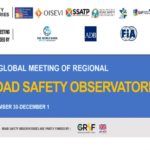
The Network of regional Road Safety Observatories (RSO), namely the European (ERSO), Ibero American (OISEVI), African (ARSO), Asia and Pacific (APRSO), Western Balkans (WBRSO) and the about to be formalized Easter Parnership (EaPRSO) and Arab (AIRSO), organised with great success the 2nd Meeting of Western Balkans Road Safety Observatories, which was hed in Skopjie on 30 November – 1 December 2021. This meeting discussed the integration of the 2nd Decade for Action Plan into the observatories´ work plans and reached agreement from RSO members on proposed indicators, policy goals, and procedures.  NTUA actively contributed with the following presentation:
NTUA actively contributed with the following presentation:

CIVINET organised with great success the 1st CIVINET Greece-Cyprus Forum under the theme “Greek Society Towards the Challenge of Sustainable Mobility on the horizon of 2030”, which was held in Athens, on 9-10 December 2021. The Conference was an opportunity for scientific organisations and researchers all over Europe to share their research results, tools, studies, and innovative solutions, with the rapidly growing Greek-speaking sustainable mobility community.  NTUA actively contributed with the following presentation:
NTUA actively contributed with the following presentation:

The Hellenic Association for the deployment of Intelligent Transport Systems (ITS Hellas), organised with great success the 7th ITS Hellas Conference which was held in Athens, on 8-9 December 2021. This hybrid Conference was held under the theme “Transportation & Logistics 4.0: Exploring Innovation”, focusing on the challenges, the needs and the benefits that will be brought by the progression in the area of transportation in Greece. ![]()
![]() NTUA actively contributed with the following presentation:
NTUA actively contributed with the following presentation:

A paper titled “Modelling self-reported driver perspectives and fatigued driving via deep learning” authored by Alexandros Zoupos, Apostolos Ziakopoulos and George Yannis is published in Traffic Safety Research. A binary logistic regression model was trained to provide causal insights on which variables affect the likelihood that a driver engaged in driving while fatigued, whereas a Deep Neural Network (DNN) was subsequently trained on the data, slightly outperforming the binary logistic model. Results demonstrate that drivers reporting driving under the influence of drugs, fatigue, or alcohol, as well as speeding, safety, and texting while driving or drivers who were more acceptable of fatigued driving were more likely to have recently driven while fatigued, and from the results of this paper it was concluded that declared fatigued driving behavior can be predicted from questionnaire data, providing new insights to fatigue detection. 
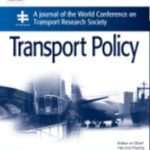
A paper titled “Quantifying the implementation impacts of a point to point automated urban shuttle service in a large-scale network” authored by Apostolos Ziakopoulos, Maria Oikonomou, Eleni Vlachogianni and George Yannis is published in Transport Policy. The results of this paper indicate that the AUSS operation has a significant effect on cumulative travel time per segment and CO2 emissions per segment only during the scenario of mixed operation with traffic during off-peak hours. Road traffic density was found to be positively correlated with both travel time and CO2 emissions, while the penetration of both cautious and aggressive CAVs was found to be negatively correlated with both indicators. 
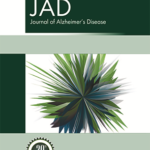
A paper titled “Effect of Apolipoprotein E4 on the Driving Behavior of Patients with Amnestic Mild Cognitive Impairment or Mild Alzheimer’s Disease Dementia“, authored by E. Stanitsa, A. Economou, I. Beratis, D. Kontaxopoulou, S. Fragkiadaki, V. Papastefanopoulou, D. Pavlou, P. Papantoniou, C. Kroupis, J. Papatriantafyllou, L. Stefanis, G. Yannis and S. Papageorgiou is published in the Journal of Alzheimer’s Disease. The results of this paper indicate that the lower speed variability of APOE4 carriers in the absence of neuropsychological test differences, as possible result of driver compensatory strategy. Simulated driving may be a sensitive method for detecting performance differences in the absence of cognitive differences. 
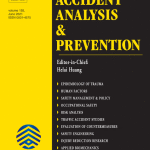
A paper titled “Analysis of the impact of COVID-19 on collisions, fatalities and injuries using time series forecasting: The case of Greece“, authored by Marios Sekadakis, Eva Michelaraki, Christos Katrakazas and George Yannis is published in Accident Analysis & Prevention. Three different Seasonal Autoregressive Integrated Moving Average (SARIMA) time series models were implemented on road casualties data for the period 2010-2020 in order to compare the observed measurements to forecasted values intended to depict assumed conditions; namely, without the appearance of the COVID-19 pandemic. The results demonstrate that fatalities and slightly injured rates were significantly increased during the lockdown period and the subsequent months. Overall, it can be concluded that a worse performance was identified in terms of road safety. Since subsequent waves of COVID-19 cases and other pandemics may reappear in the future, the outcomes of the current study may be exploited for the improvement of road safety from local authorities and policymakers. 

The European Commission adopted a supplementing Regulation (EU) 2019/2144 of the European Parliament and of the Council by laying down detailed rules concerning the specific test procedures and technical requirements for the type-approval of motor vehicles with regard to their intelligent speed assistance systems and for the type-approval of those systems as separate technical units. The Regulation also includes a list of road speed limit signs used in each Member State. 


POLIS, the European Cities Network, organised with great success the 2021 Annual Polis Conference, which took place on 1-2 December 2021 in Gothenburg, Sweden. The Conference provided an opportunity for cities and regions to showcase their transport achievements to a large audience of mobility experts, practitioners and decision makers. With a focus on innovation, sustainability and co-creation, Gothenburg hosted one of Europe’s most dynamic clusters within the field of mobility and safety. 
 NTUA actively contributed with the following presentation:
NTUA actively contributed with the following presentation:
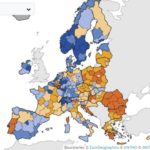
Based on the new interactive map of EUROSTAT which concerns the road safety performance of European Union regions (NUTS 2), the incidence rate for road fatalities in the EU fell by 32% between 2009 and 2019. The most rapid declines were recorded in Ciudad de Melilla in Spain (-100%), while two regions in Greece (Sterea Ellada and Anatoliki Makedonia-Thraki), Wien in Austria, Västsverige in Sweden, and Luxembourg also recorded falls of more than 60%. For 2019, the highest incidence rates were recorded in Prov. Luxembourg in Belgium (171 road fatalities per million inhabitants), Região Autónoma da Madeira (165) and Alentejo (156) in Portugal. On the other hand, the lowest incidence rates were recorded in Wien in Austria (6), Stockholm in Sweden (9) and Berlin in Germany (11). 

The European Platform on Mobility Management (EPOMM), organised with great success the European Conference on Mobility Management (ECOMM2021), which was held in Cacais, Portugal, on 24-25 November 2021, under the theme Beginning of a New Era – Accelerating Shifting to Sustainable Mobility. Considering the necessary deep changes in economy, society, policy, environment and technology, ECOMM 2021 encouraged the discussion and exchange on the Beginning of a New Era at a European level. NTUA actively contributed with the following presentation:
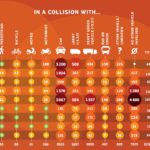
The European Commission published a breakdown of fatalities in the EU by road user and (other) “main vehicle” involved in the crash. The matrix shows clearly that fatalities overwhelmingly occur in collisions involving cars and trucks, and the need to increase the protection of vulnerable road users such as pedestrians and cyclists. EU policies are already evolving in this direction with the new mandatory safety measures introduced by the General Safety Regulation focussed on VRUs. 


The European Commission published the final figures on road fatalities for 2020, following the publication of the preliminary figures in April 2021. These figures show that an estimated 18.800 people were killed in a road crash last year, an unprecedented annual fall of 17% on 2019, largely due to the effect of the COVID pandemic on mobility; however this fatalities drop being proportionately less than the sharp fall in traffic levels across the EU.  The Commission has also published the Country Profiles which provide a detailed statistical analysis of the road safety situation in each country.
The Commission has also published the Country Profiles which provide a detailed statistical analysis of the road safety situation in each country. 

The European Commission hosted the annual Excellence in Road Safety Awards on 18 November 2021, recognising the contributions of the European Road Safety Charter‘s community of members towards the common goal of improved road safety across Europe. Fundatia Siguranta Auto Copii (Romania) was the winner for its National Children Care Safety Caravan initiative, Interpolis (the Netherlands) for its hip-hop film and PhoNo app targeting teenagers, Cork County Council (Ireland) for its Road Safety Virtual Reality Education and Fundacion Educatrafic (Spain) for its road safety training and education. 

In the framework of three-year twinning program of the European Union Member States “EU Road Safety Exchange“, a delegation from the Hellenic Ministry of Infrastructure and Transport together with representatives of the European Transport Safety Council (ETSC) participated in the 2nd two-day study visit that took place in Madrid on 10-11 November 2021. This study visit was hosted by the Directorate for Traffic (DGT) of the competent Ministry of Spain and its topic was powered two wheelers (PTW) safety. The participants heard among others about the Spanish strategic approach to improving the safety of powered two wheelers. 


A paper titled “Did the COVID-19 pandemic influence traffic fatalities in 2020? A presentation of first findings” authored by Fred Wegman and Christos Katrakazas was recently published online in IATSS Research. The results of this research show that the number of fatalities in 2020 was 17.3% lower in the 24 participating countries compared with the baseline period and the reduction is almost seven times higher than annually in these countries in the period 2010–2019. The reduction in the number of fatalities is associated with less mobility, but a comprehensive analyses should take into account more crash and injury risk factors. 

The EU-funded Horizon 2020 project Levitate (Societal Level Impacts of Connected and Automated Vehicles) organised with great success a Webinar under the theme “Social Level Impact of Connected and Automated Vehicles“. NTUA actively contributed with the following presentation:

The European Road Transport Research Advisory Council (ERTRAC) with the active contribution of NTUA published the Safe Road Transport Research Roadmap, as part of the ERTRAC Roadmaps. According to the Report, injury figures have remained nearly constant from 2013 to 2019, and even if preliminary fatality figures show a massive reduction in 2020, this can most likely be attributed to lower traffic volumes during the COVID-19 crisis. 


The University of Bologna, within the framework of the EU funded Horizon 2020 project PREDICT: Theory of prediction in the digital society, organised with great success a Workhop that was held in Bologna, on 18-19 November 2021. PREDICT aims to investigate a more extensive form of rationality in contemporary prediction, and the main Workshop theme was “The Future of Insurance: How does algorithmic prediction affect insurance practices?”. NTUA actively contributed with the following presentation:

The European Federation of Road Victims (FEVR) together with FIAFoundation and UNRSC members commemorated the World Day of Remembrance for Road Traffic Victims 2021 (#WDoR2021) on 21 November 2021. The slogan of WDoR2021 was Remember-Support-Act and the main objectives were to provide a platform for road traffic victims and their families to remember all people killed and seriously injured on the roads, acknowledge the crucial work of the emergency services and to draw attention to the generally trivial legal response to culpable road deaths and injuries.  The World Bank Global Road Safety Facility (GRSF) has organised a Conversation on Road Safety.
The World Bank Global Road Safety Facility (GRSF) has organised a Conversation on Road Safety. 
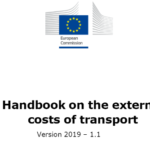
The European Commission – DG Move published a handbook, which has been developed in the study ‘Sustainable Transport Infrastructure Charging and Internalisation of Transport Externalities’, commissioned by a consortium led by CE Delft. The objective of this study is to assess the extent to which the ‘user pays’ and the ‘polluter pays’ principles are implemented in EU Member States and in other developed countries. This Report provides an overview of the methodologies and input values that can be used to provide state-of-the-art estimates for all main external costs of transport. Furthermore, the Report and corresponding excel file present the total, average and marginal external costs for all relevant countries. 


NTUA Professor George Yannis is ranked 2nd most productive European Scientist in Road Safety Research (11th globally and at the top 0.1% of all Scientists in the field), according to recent rankings from Expertscape‘s PubMed-based algorithms for the last 10 years. According to the same rankings, NTUA Road Safety research productivity is ranked 4th in Europe (and within the top 40 Universities globally). 

The Hellenic Ministry of Infrastructure and Transport proposed the New Driving Safely Law, which has been recently adopted by the Greek Parliament. The new law reforms the driving examinations’ framework, with the priority of ensuring the integrity of the procedure and the promotion of road safety. Among other things, the new safety net consists of double identity checks, camera recordings during the exams and collection of the audiovisual reports. Also, a temporary driving license is foreseen for young people aged 17 years old, who will be able to drive only within their residence area accompanied with a co-driver of over 25 years old holding a driving license for at least 5 years. 

The 5th Newsletter of the EU funded Horizon 2020 project Levitate (Societal Level Impacts of Connected and Automated Vehicles) was recently released focusing on the results of the latest Levitate Webinar titled “Social Level Impact of Connected and Automated Vehicles“, on the next webinar on “Automated road transport – impact assessment methodologies” and on several events and news on Road Safety. 

The International Association of Traffic and Safety Sciences (IATSS) organised with great success the 7th GIFTS Symposium, which was held online, on 18 November. In this 7th forum, experts in transportation and safety as well as specialists from international organizations, kicked around the roles of transportation policy in response to regional and national characteristics. The aim was to exchange opinions and discuss various issues to be resolved for a sustainable transportation society and future prospects, while keeping the ideal post-corona society in mind. 
 NTUA actively contributed with the following presentation:
NTUA actively contributed with the following presentation:
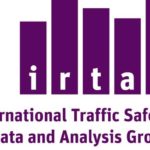
The International Traffic Safety Data and Analysis Group (IRTAD) of the International Transport Forum (ITF) and the Organisation for Economic Co-operation and Development (OECD) organised with great success the 33rd Meeting which was held online on 16 November. In this Conference the latest international road safety developments were discussed. NTUA contributed actively with the following presentation:

Lund University and The Swedish Cycling Research Centre at VTI co-organised with great success the ICSC2021 under the theme “Safe cycling as an integral part of the future mobility system: planning and designing for a safe interaction between road users“, which was held online, on 10-12 November 2021. The Conference took place on the virtual networking platform in which efficient social interactions were made possible and it had a special session under the theme “Cycling in pandemic time“.  NTUA actively contributed with the following presentation:
NTUA actively contributed with the following presentation:
 Assessing the Impact of Bicycle Treatment Type on the Frequency of Right-Hook Conflicts Between Bicyclists and Motorized Vehicles at Signalized Intersections
Assessing the Impact of Bicycle Treatment Type on the Frequency of Right-Hook Conflicts Between Bicyclists and Motorized Vehicles at Signalized Intersections
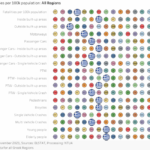
The new Greek Regions interactive road fatalities Infographic of the NTUA Road Safety Observatory, based on ELSTAT data for 2019, allows for performance comparisons for different types of road crashes. It is demonstrated that disaggregate data can reveal hidden road safety issues, allowing national and local Authorities to focus on targeted road safety countermeasures. 

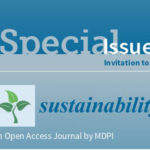
The scientific journal Sustainability organised with great success the publication of a special issue under the theme: “Challenges and Strategies for Sustainable Transportation and Traffic Safety”. Topics of interest include, but are not limited to Traffic safety impact assessment of sustainability measures, Cost-Benefit effects of sustainable safety interventions and Policies for the integration of the dimension of sustainability in traffic safety interventions. Guest editors of this special issue were Athanasios Theofilatos, Apostolos Ziakopoulos and Ioanna Pagoni. 


The Road Traffic Safety Agency of Serbia (RTSA) together with several Serbian and international road safety Governmental, Academic and other organisations organised with great success the 17th International Conference Road Safety in Local Communities, which was held in Vrnjacka Banja, Serbia on 13-16 April 2022. In this Conference participants had the opportunity to present and hear about the activities of local communities, through a number of workshops and round tables. 














































































































































































